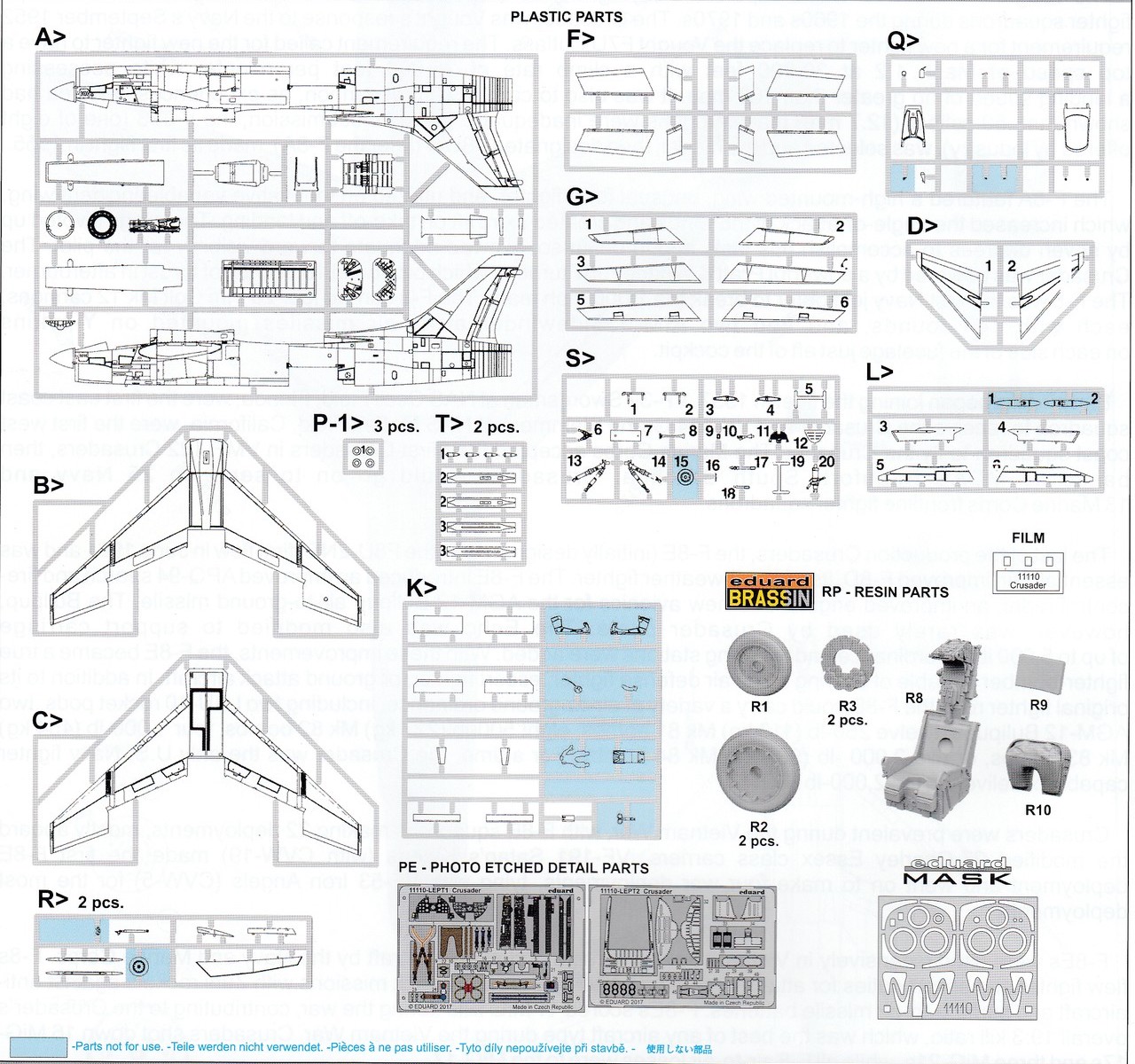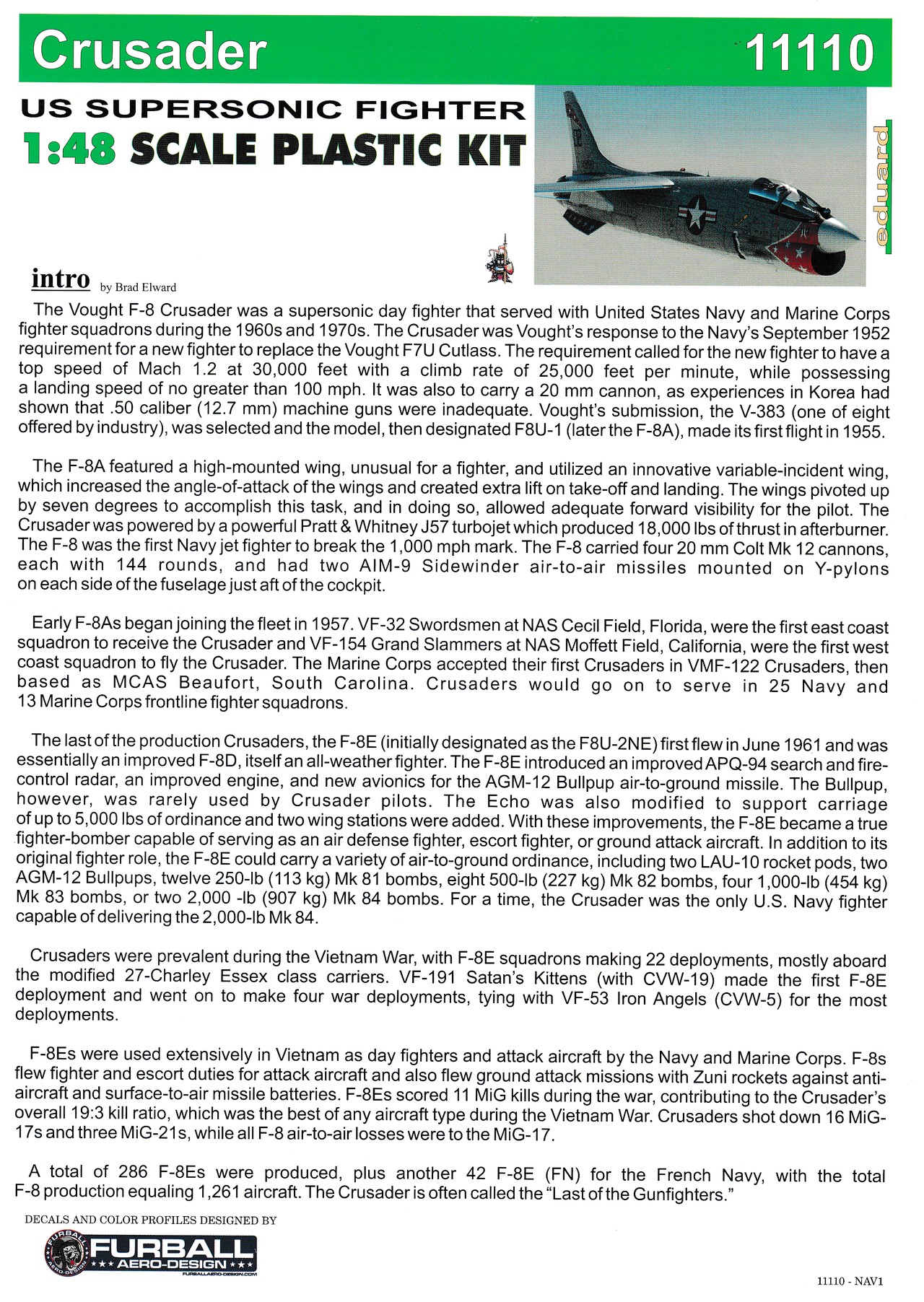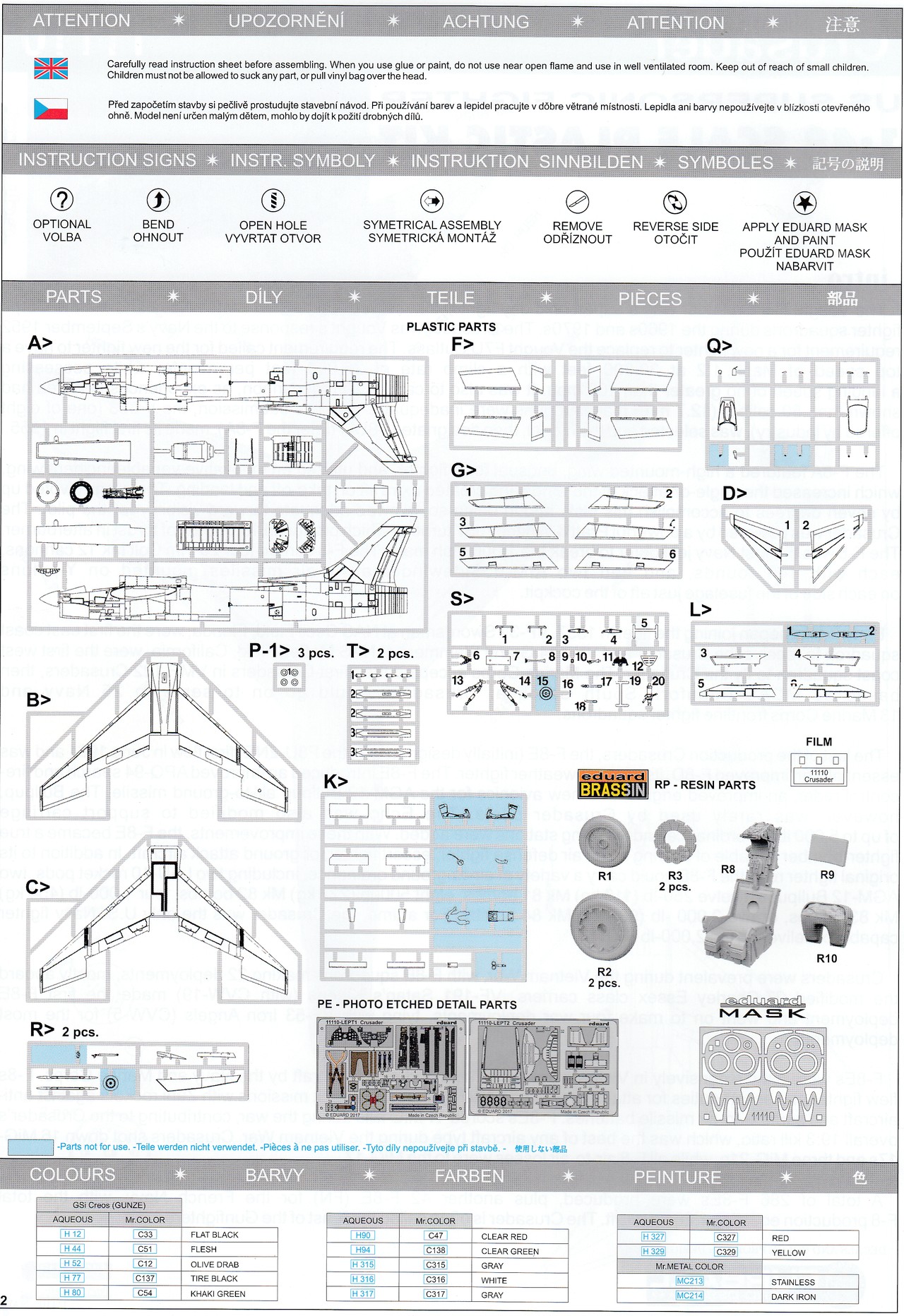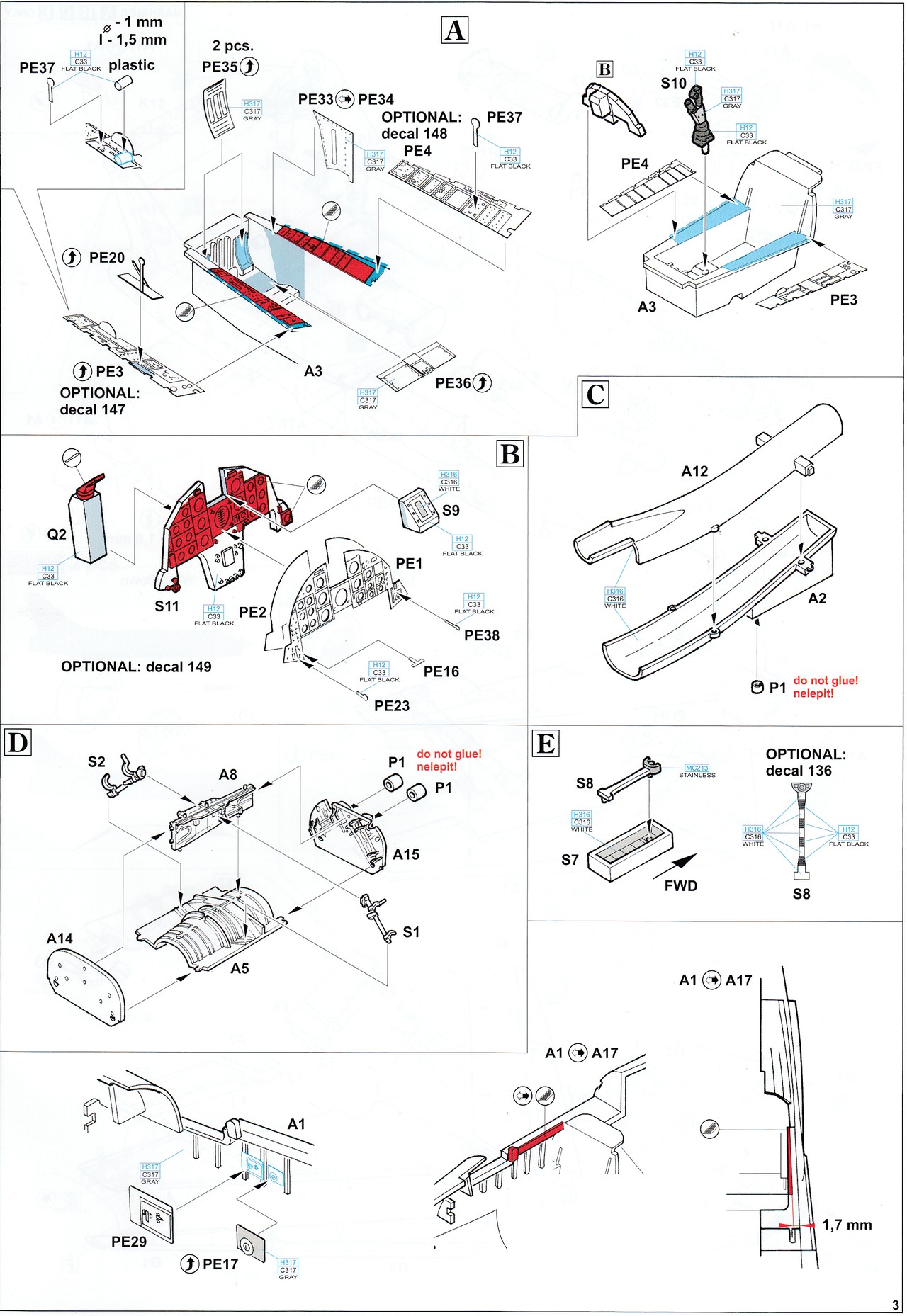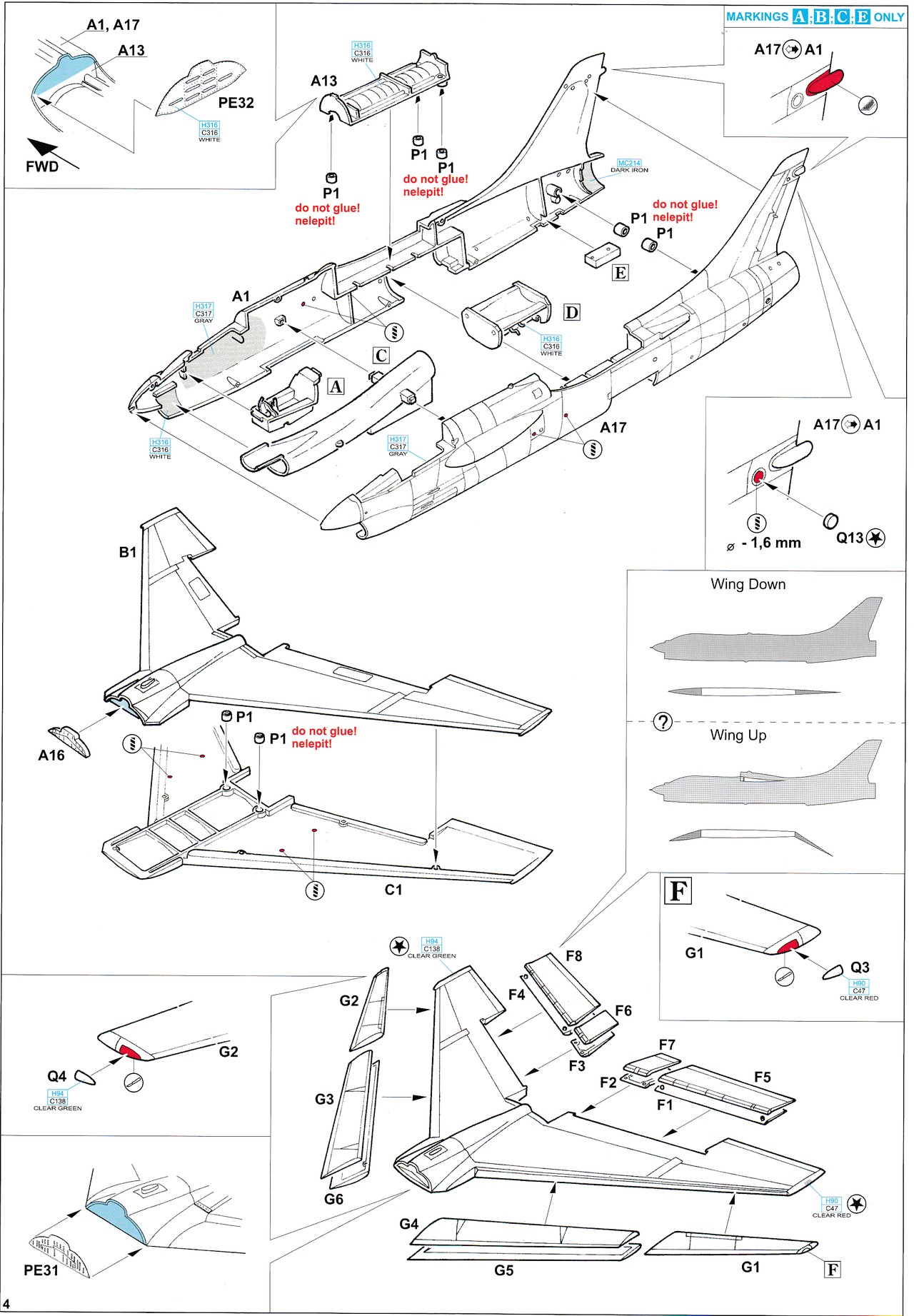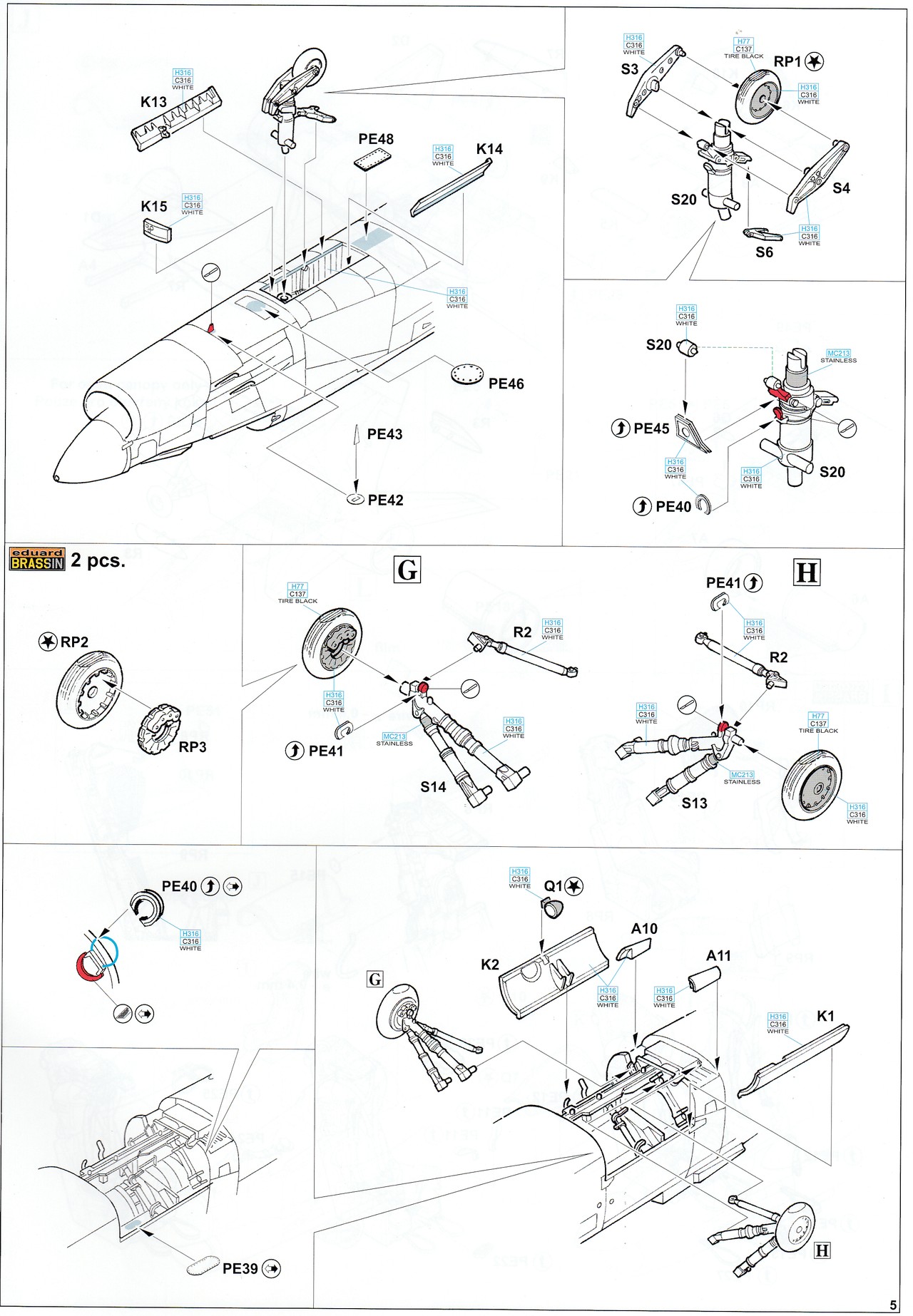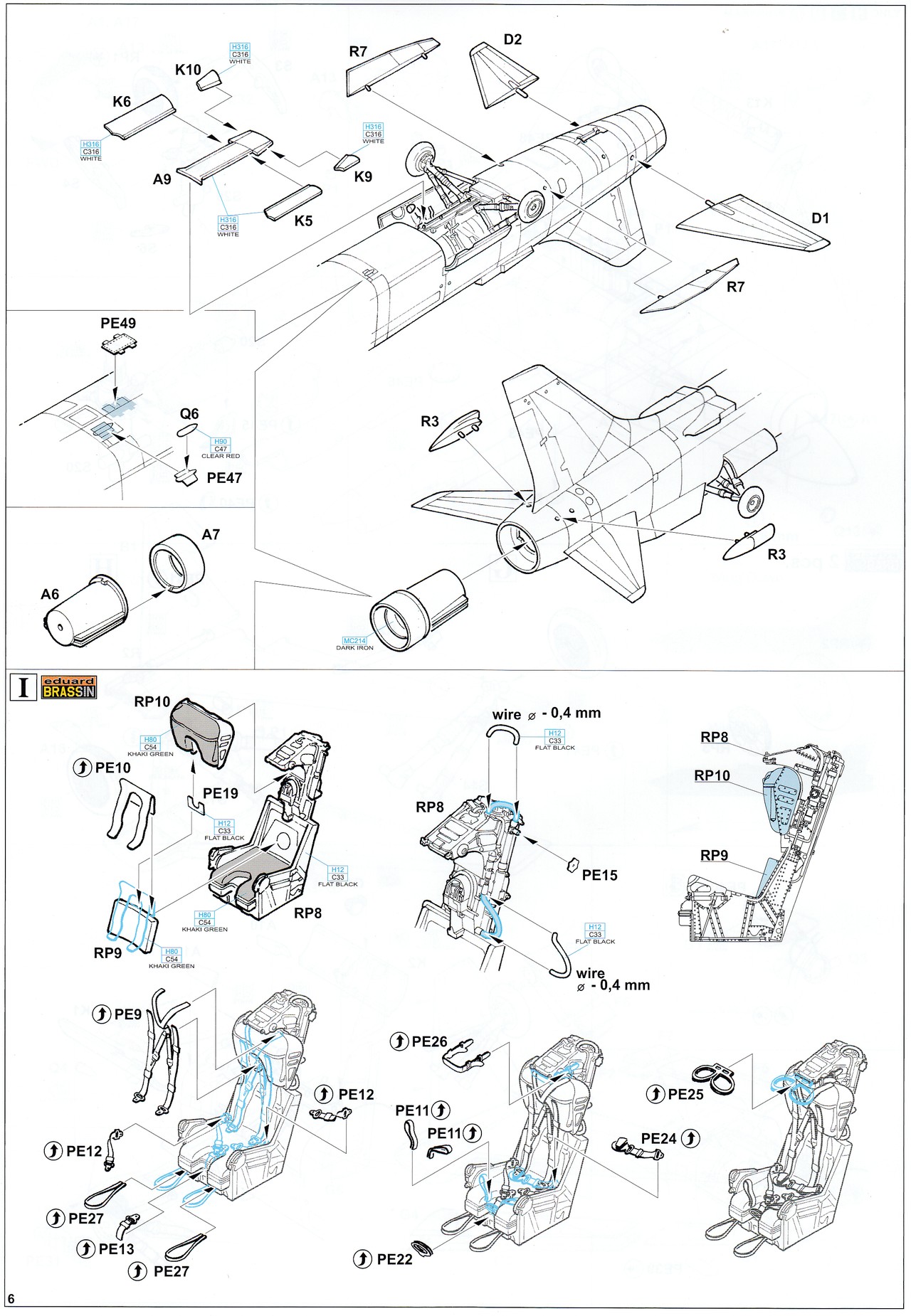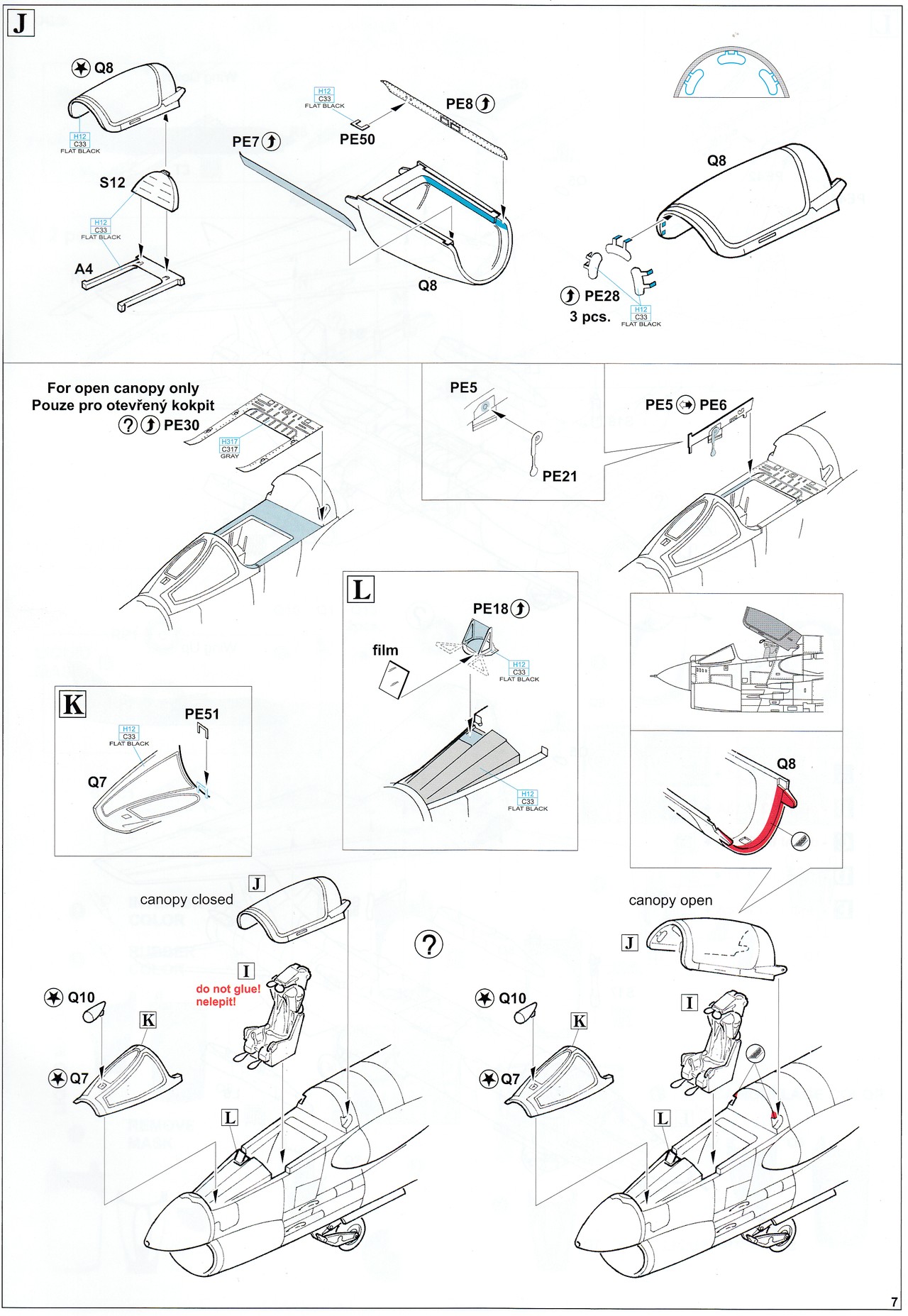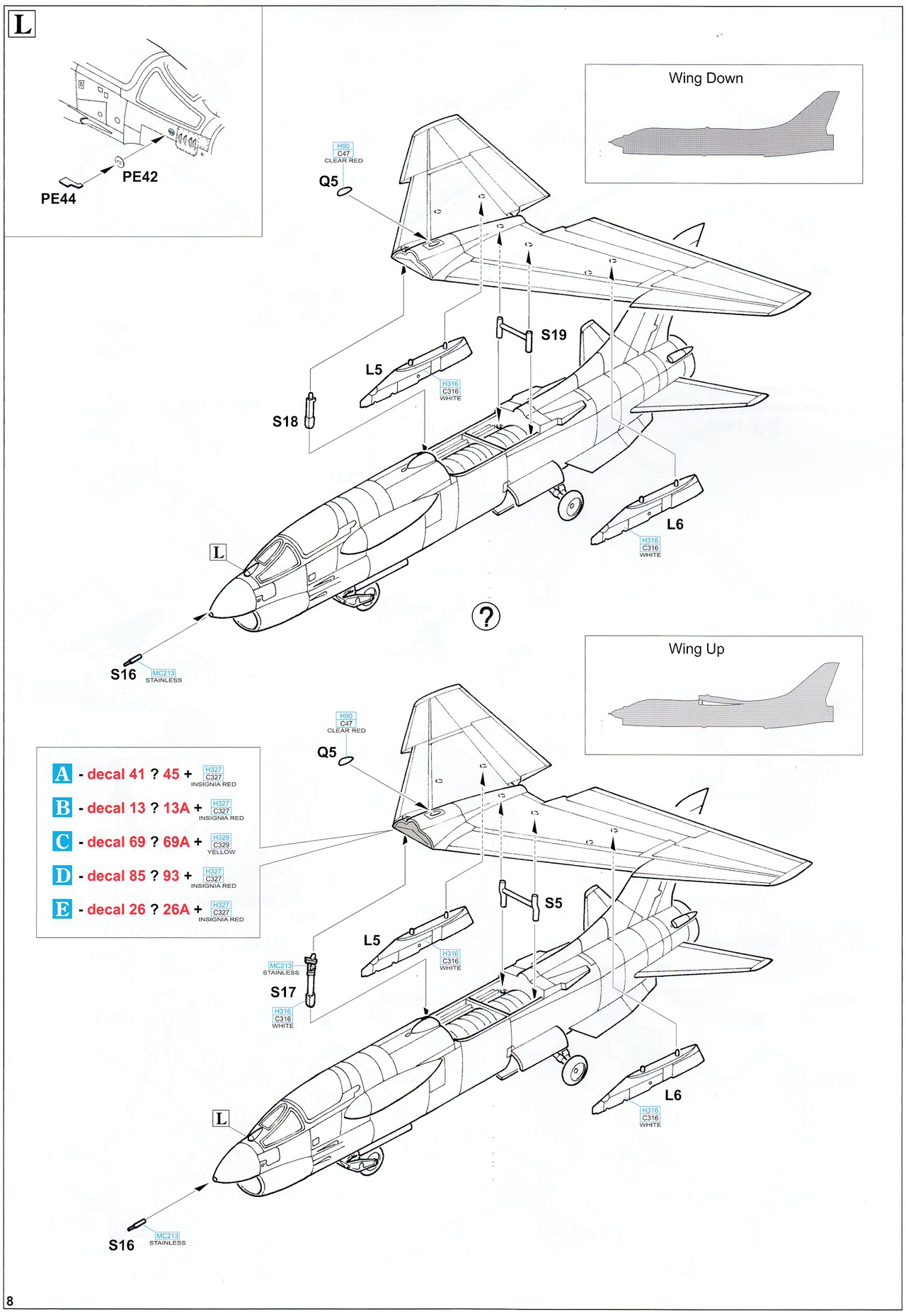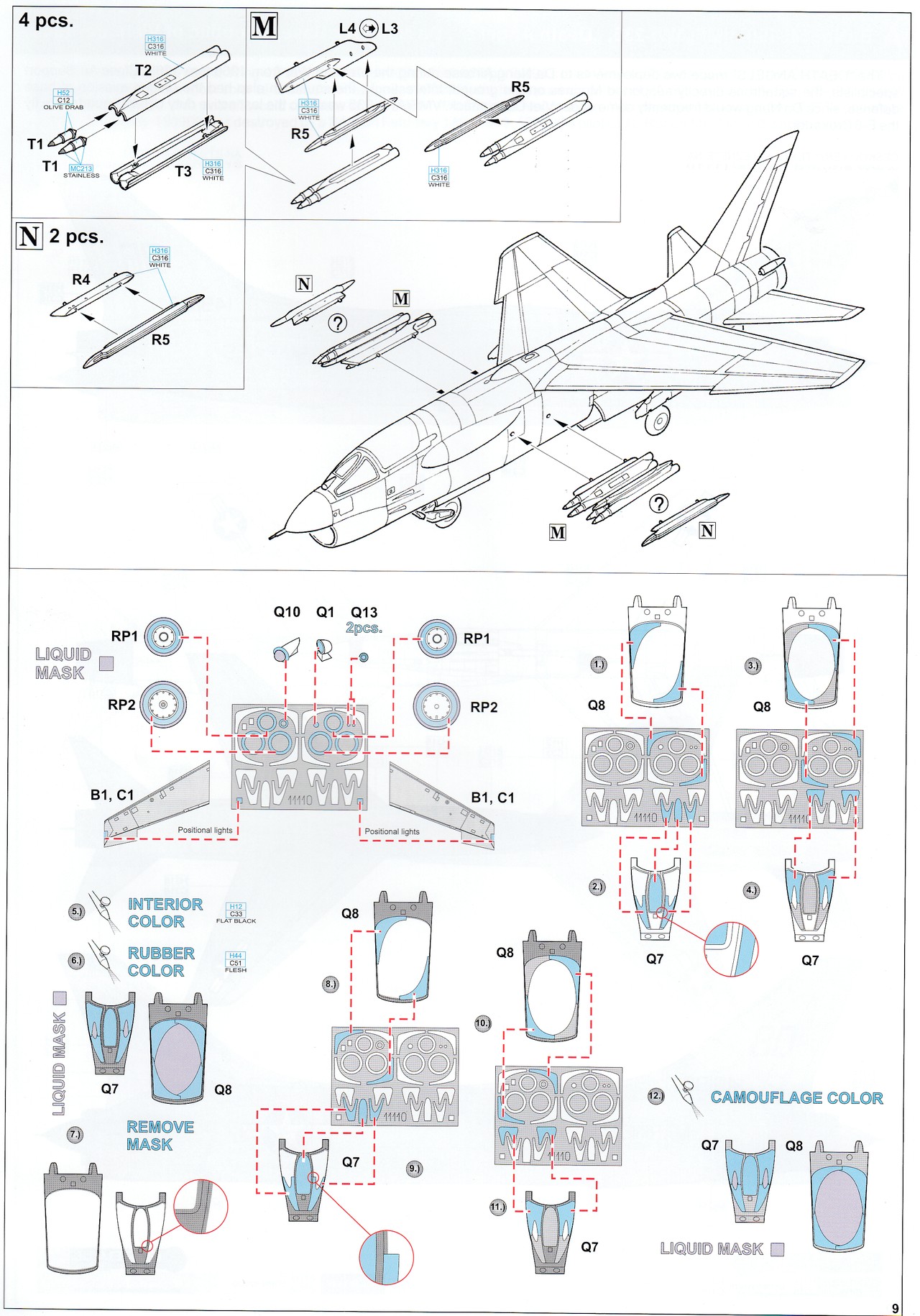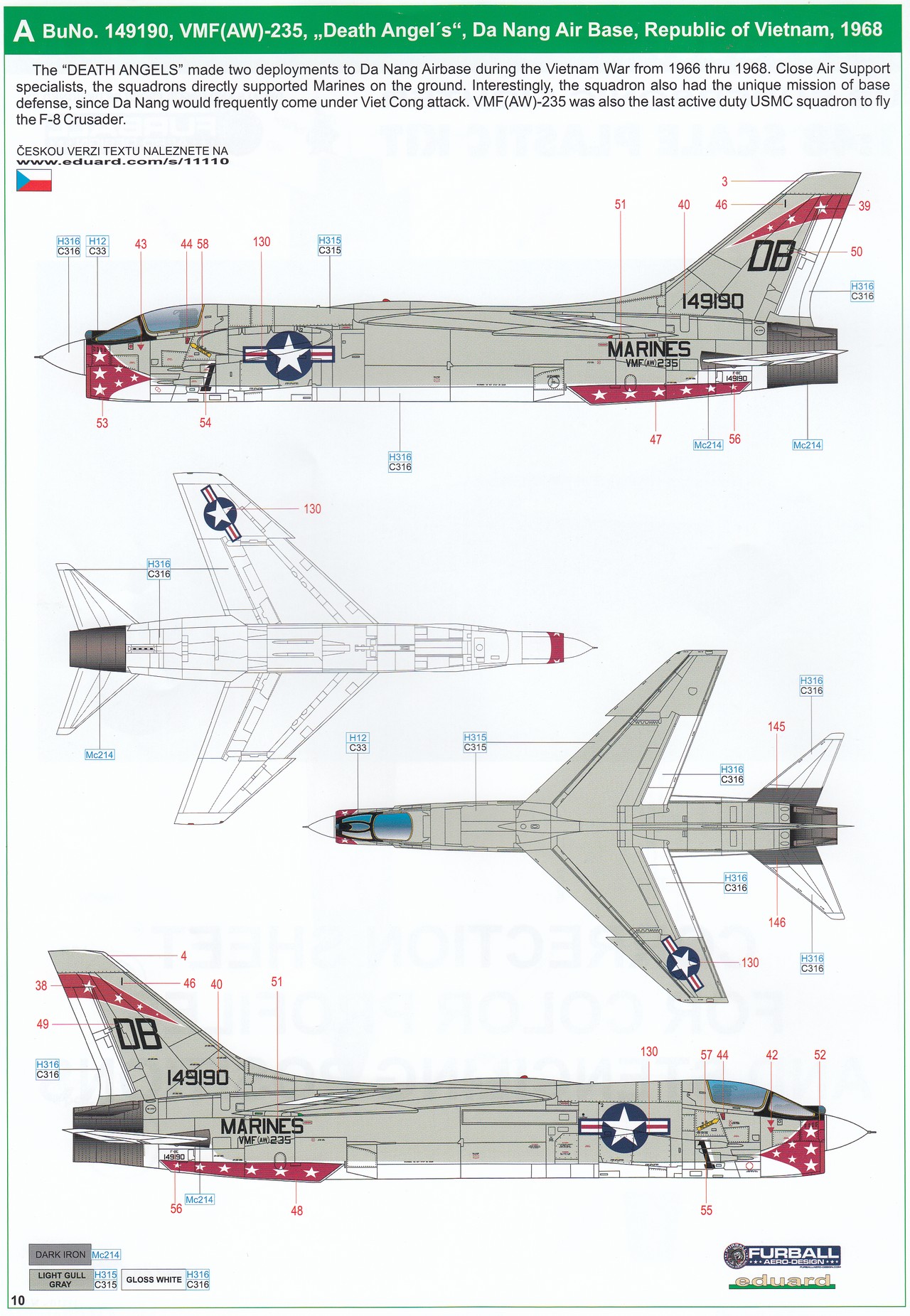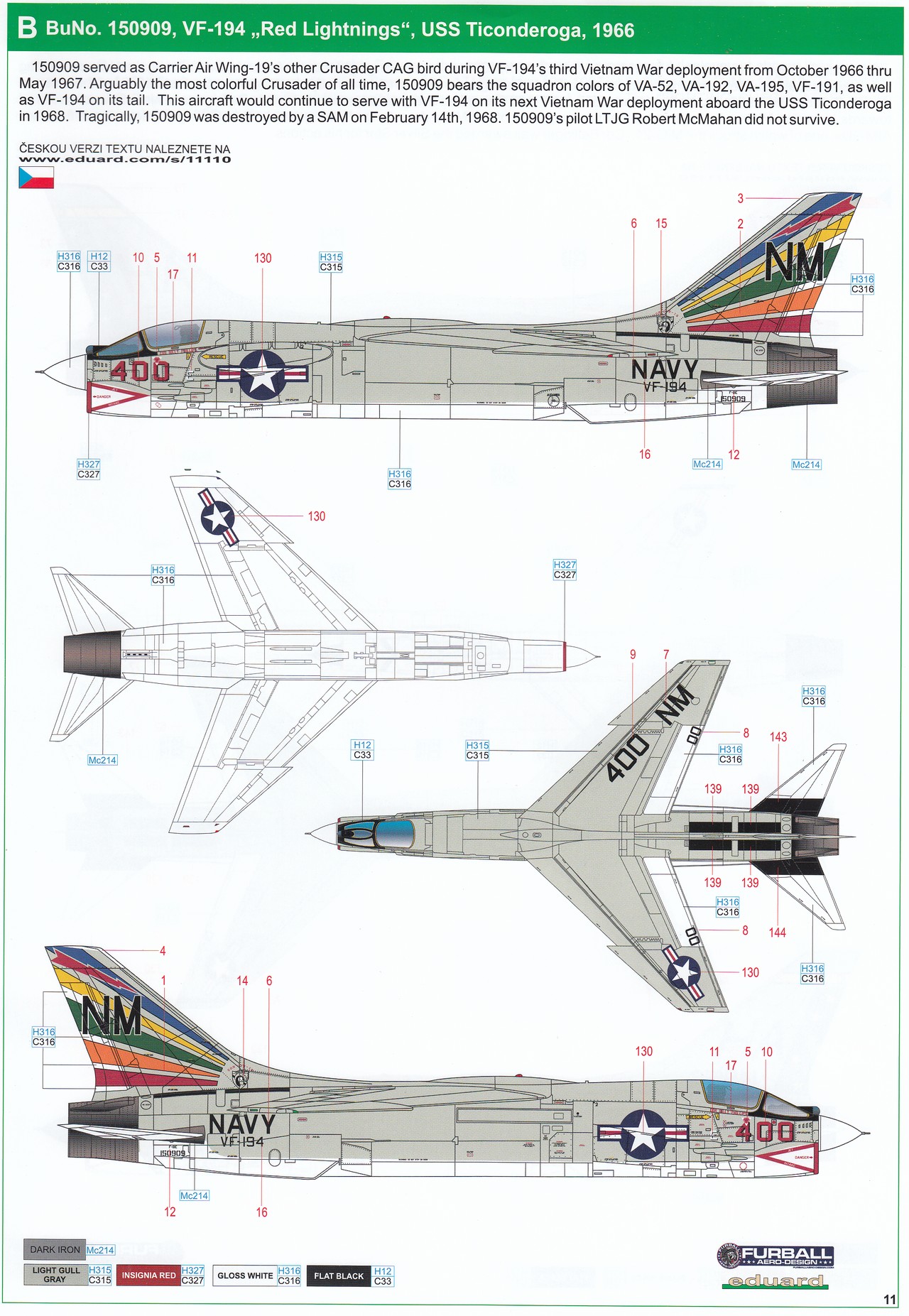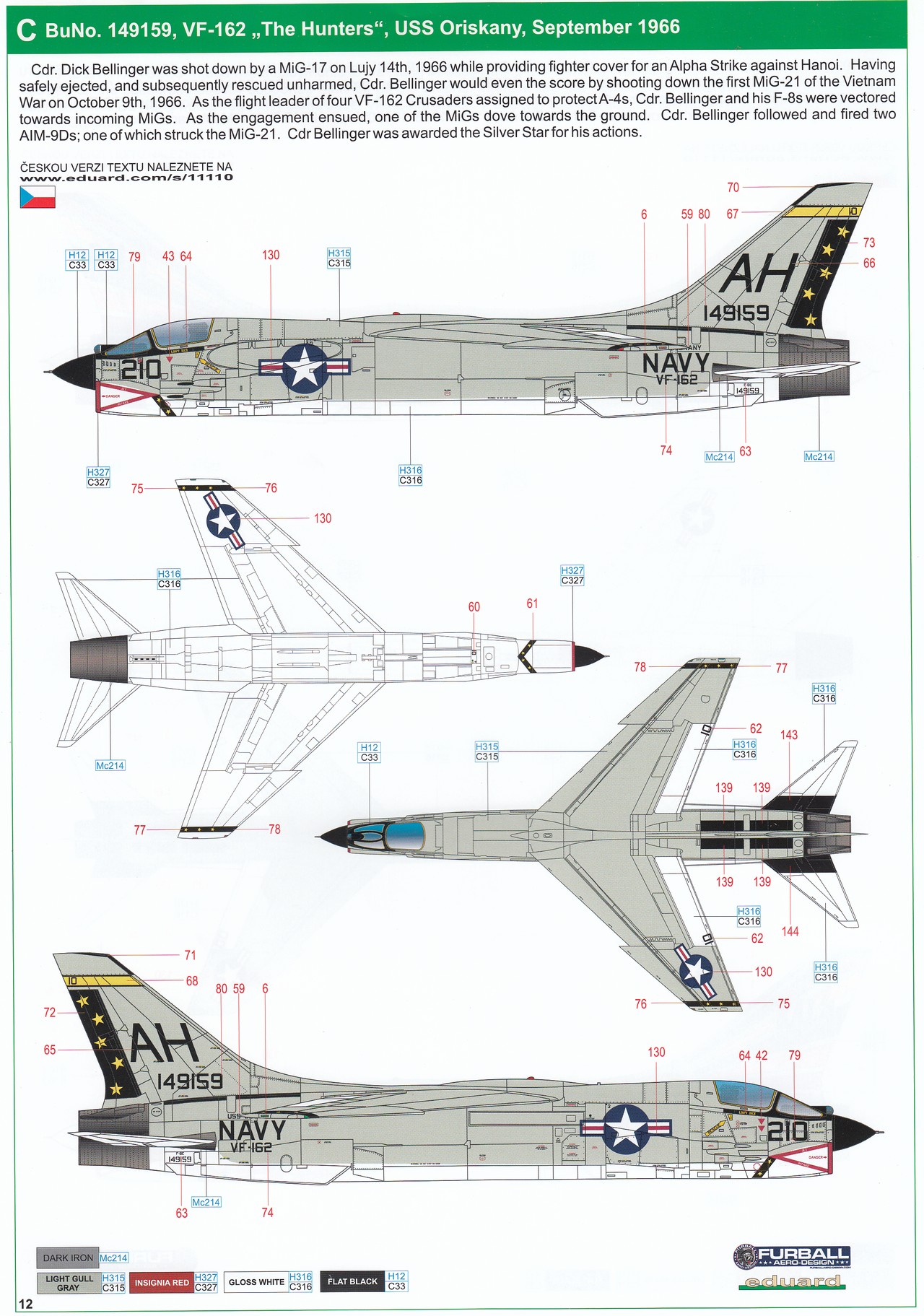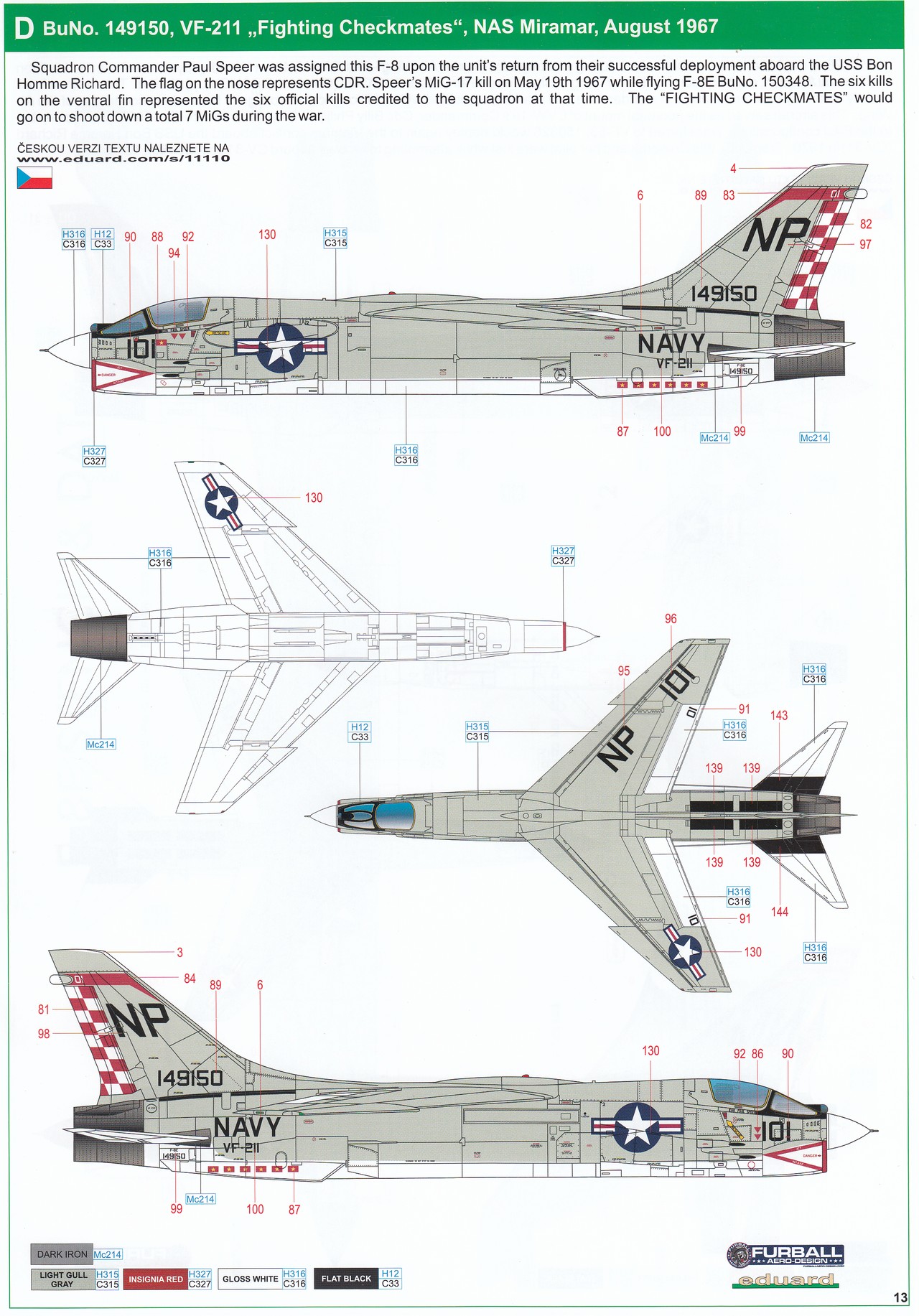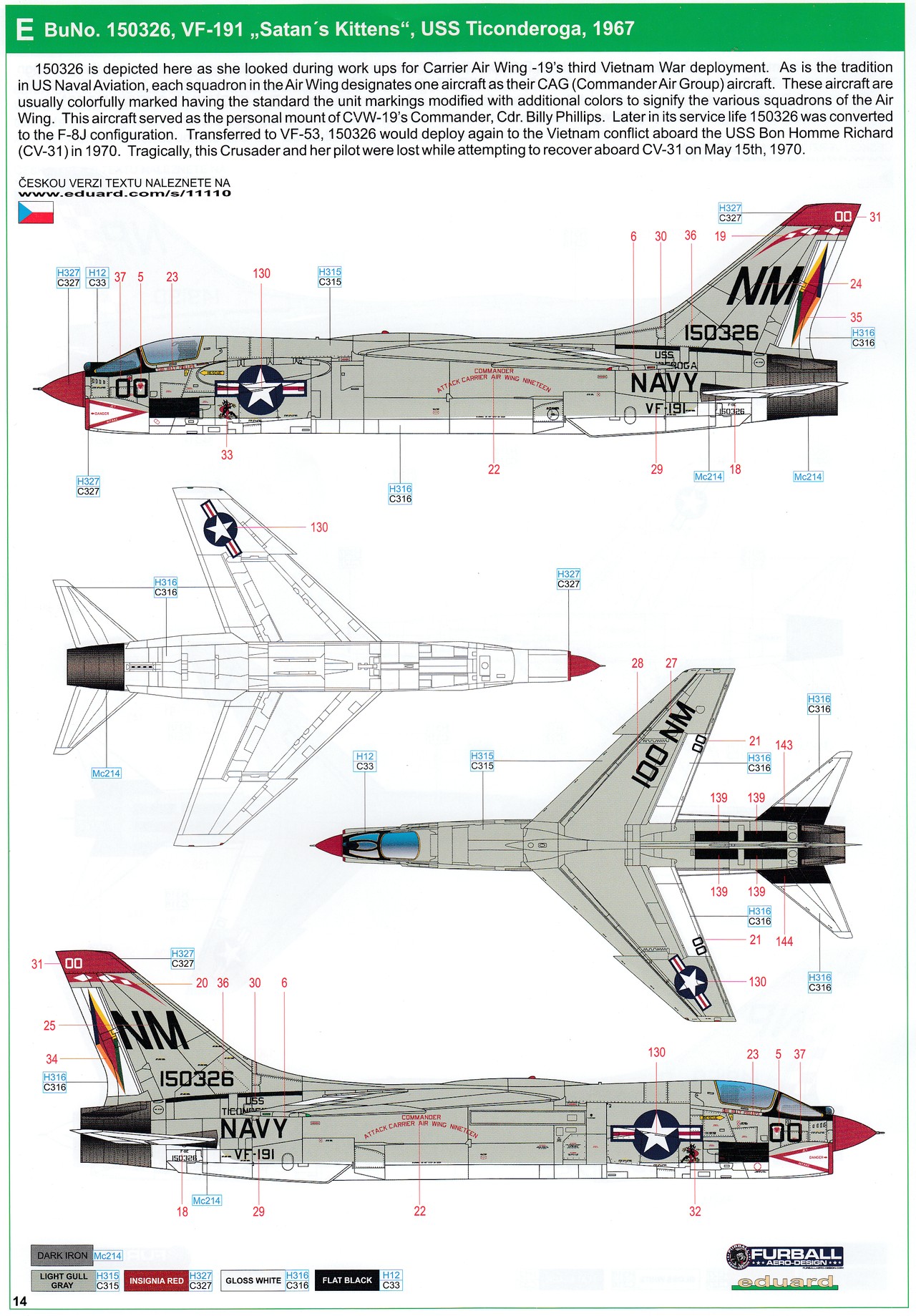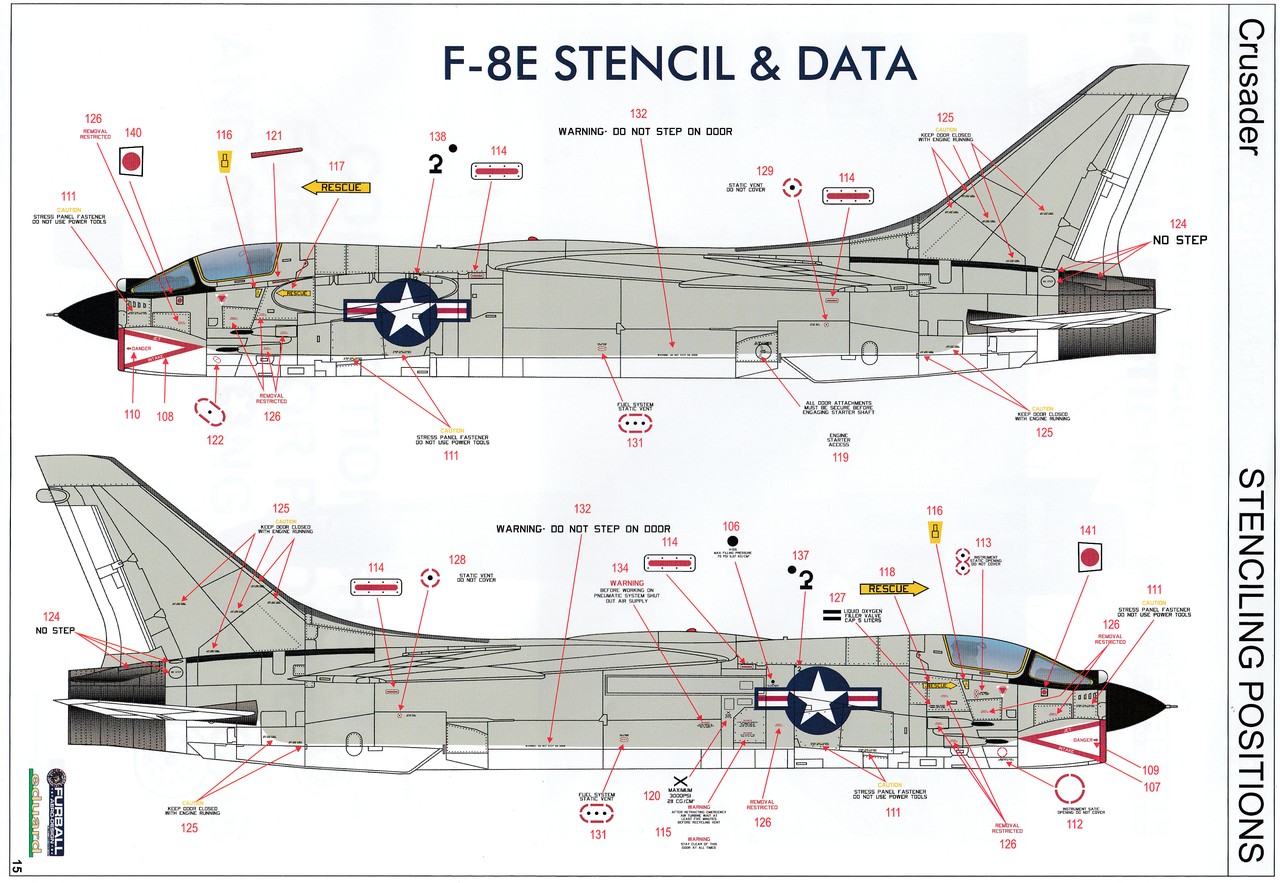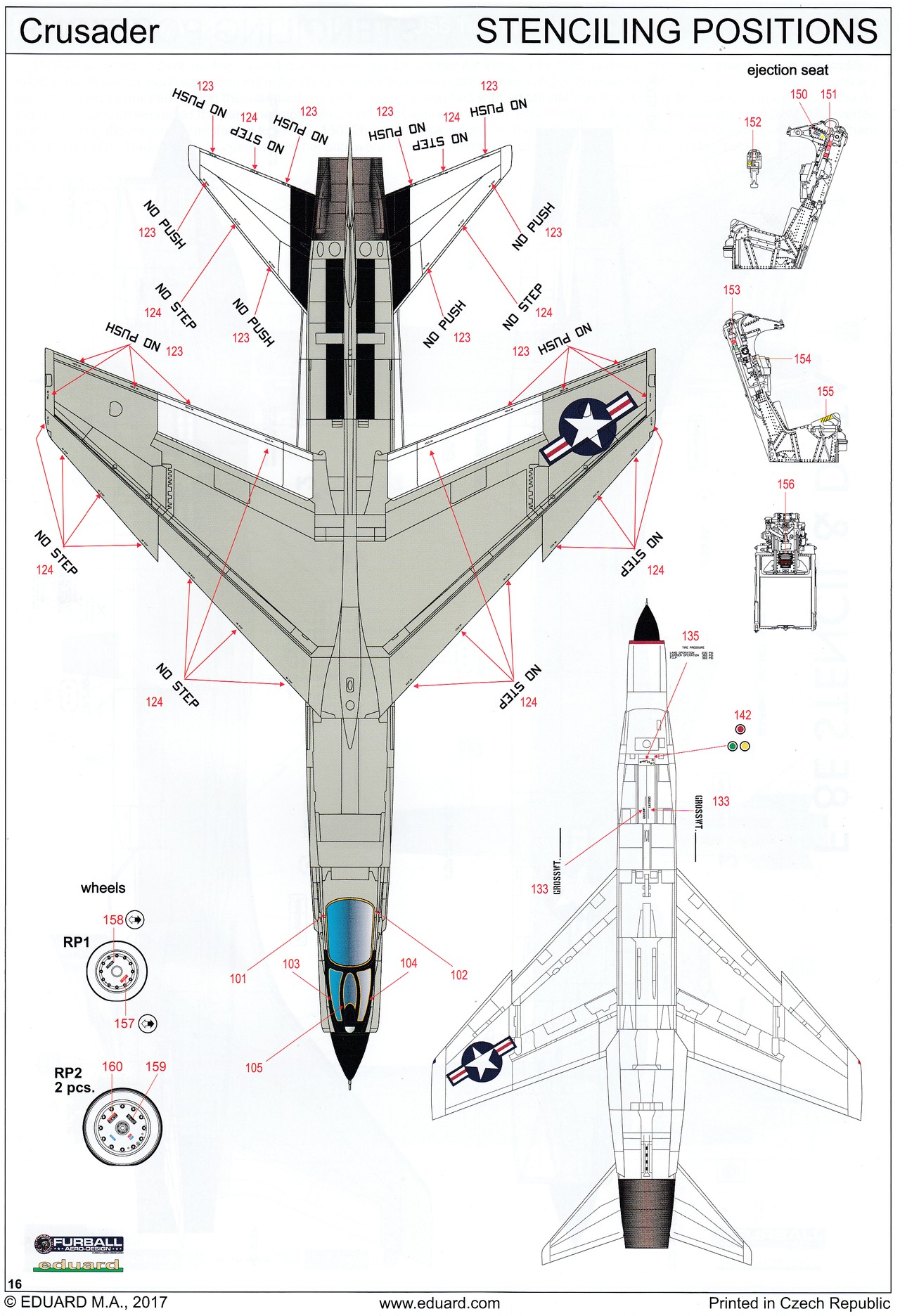|
|
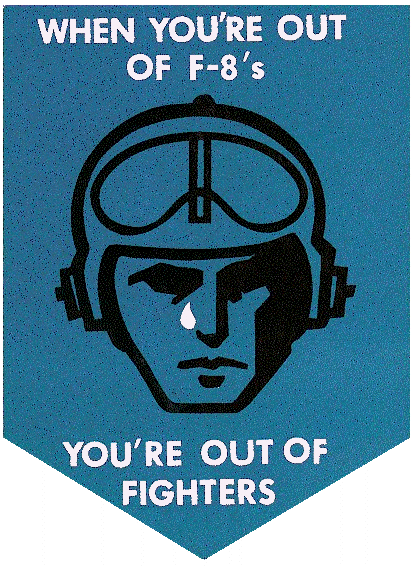 The Vought F-8 Crusader was a single-engine, supersonic, carrier-based air superiority jet aircraft built by Vought for the United States Navy and Marine Corps,
replacing the Vought F7U Cutlass, and for the French Navy. The first F-8 prototype was ready for flight in February 1955. The F-8 served principally in
the Vietnam War. The Crusader was the last American fighter with guns as the primary weapon, earning it the title "The Last of the Gunfighters".
The Vought F-8 Crusader was a single-engine, supersonic, carrier-based air superiority jet aircraft built by Vought for the United States Navy and Marine Corps,
replacing the Vought F7U Cutlass, and for the French Navy. The first F-8 prototype was ready for flight in February 1955. The F-8 served principally in
the Vietnam War. The Crusader was the last American fighter with guns as the primary weapon, earning it the title "The Last of the Gunfighters".
The most innovative aspect of the F-8 design was the variable-incidence wing which pivoted by 7 degrees out of the fuselage on takeoff and landing (not to be confused with variable-sweep wing).
This allowed a greater angle of attack, increasing lift without compromising forward visibility. Simultaneously, the lift was augmented by leading-edge slats drooping by 25 degrees and
inboard flaps extending to 30 degrees [source: wikipedia]
The armament, as specified by the Navy, consisted primarily of four 20 mm (.79 in) autocannon; the Crusader happened to be the last U.S. fighter designed with guns as its primary weapon.
They were supplemented with a retractable tray with 32 unguided Mk 4/Mk 40 Folding-Fin Aerial Rocket (Mighty Mouse FFARs), and cheek pylons for two
guided AIM-9 Sidewinder air-to-air missiles.
|
|
|
|
|
|
|
|
|
The Crusader became a "day fighter" operating off the aircraft carriers. At the time, U.S. Navy carrier air wings had gone through a series of day and night fighter
aircraft due to rapid advances in engines and avionics. Some squadrons operated aircraft for very short periods before being equipped with a
newer higher performance aircraft. The Crusader was the first post-Korean War aircraft to have a relatively long tenure with the fleet and like
the USAF Republic F-105 Thunderchief, a contemporary design, might have stayed in service longer if not for the Vietnam War and corresponding attrition
from combat and operational losses.
|
|
|
|
|
|
|
|
When conflict erupted in the skies over North Vietnam, it was U.S. Navy Crusaders from the USS Hancock that first tangled with Vietnam People's Air Force (the North Vietnamese Air Force)
MiG-17s, on 3 April 1965. The MiGs claimed the downing of a Crusader, and Lt Pham Ngoc Lan's gun camera revealed that his cannons had set
an F-8 ablaze, but Lieutenant Commander Spence Thomas had managed to land his damaged Crusader at Da Nang Air Base, the remaining F-8s returning safely to
their carrier. At the time, the Crusader was the best dogfighter the United States had against the nimble North Vietnamese MiGs.
Some experts believed that the era of the dogfight was over as air-to-air missiles would knock down adversaries well before they could get close enough to engage in dogfighting.
As aerial combat ensued over North Vietnam from 1965 to 1968, it became apparent that the dogfight was not over and the F-8 Crusader and a
community trained to prevail in air-to-air combat was a key ingredient to success.
|
|
|
|
|
|
|
|
|
Despite the "last gunfighter" moniker, the F-8s achieved only four victories with their cannon; the remainder were accomplished with AIM-9 Sidewinder missiles, partly due to the
propensity of the 20 mm (.79 in) Colt Mk 12 cannons' feeding mechanism to jam under G-loading during high-speed dogfighting maneuvers. Between June and
July 1966, during 12 engagements over North Vietnam, Crusaders claimed four MiG-17s for two losses.[ The Crusader would claim the best kill ratio of any
American type in the Vietnam War, 19:3. [source: wikipedia]
|
|
|
|
Thoughts about the Eduard 1:48 F-8E Crusader 'Limited Edition' (ED11110)
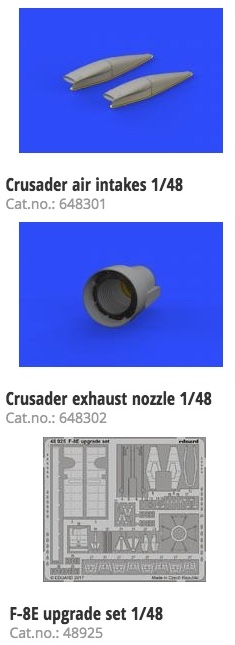 This is the first of the Eduard 'Limited Edition' releases that I have obtained. In the past I resisted the urge to add another kit to my vast unbuilt stash
even though these Eduard boxings were packed with extra goodies to supplement the core plastic that Eduard has sourced from Academy and more lately Hasegawa.
When the F-8 Crusader came up however, even though I have 3 of the Hasegawa kits, I dove straight in. Reason being I've not got around to building any of my existing
F-8 kits and knew the extra motivation of getting his kit for a review would be what I needed to finally get to it.
This is the first of the Eduard 'Limited Edition' releases that I have obtained. In the past I resisted the urge to add another kit to my vast unbuilt stash
even though these Eduard boxings were packed with extra goodies to supplement the core plastic that Eduard has sourced from Academy and more lately Hasegawa.
When the F-8 Crusader came up however, even though I have 3 of the Hasegawa kits, I dove straight in. Reason being I've not got around to building any of my existing
F-8 kits and knew the extra motivation of getting his kit for a review would be what I needed to finally get to it.
Once the kit arrived I have to admit to being a bit underwhelmed. I guess I had just expected that Eduard would fill the box with every aftermarket goodie
they had in their inventory. I was even hoping for them to include a set of their excellent Brassin AIM-9 Sidewinders (because Hasegawa never did) but alas none of this was to be.
A quick search on the Eduard site shows that they have indeed recently released a few new sets (648301, 648302, 48925) to co-incide with the release of their Crusader, you
just don't get them with the kit :(
Now I realise that just because something is marketed as 'Limited Edition' does not mean it has to be the ultimate boxing of that kit. I also understand that Eduard is running
a business and want to sell more goodies with each kit (do you want fries with that burger?). It's just not what I was expecting is all. So the reason I mention
this is just in case any of you are expecting it, you won't be underwhelmed like me :) After all that's one of the reasons you read these reviews right ? You are better
informed when you make a purchase.
So rather than thinking about what could/should have been in the box, let's look more closely at what actually is in this Eduard boxing:
- Hasegawa Plastic Sprues to make an F-8E (no F-8J sprues are included)
- Eduard Brassin Resin Ejection Seat
- Eduard Brassin Resin Wheel set (main & nose wheels)
- Eduard Canopy/Wheel/Lights Mask Set
- Eduard Pre-Painted Photo Etch Set (Cockpit/Seat) #11110-LEPT1
- Eduard Photo Etch Set (Exterior) #11110-LEPT2
- Furball Aero-Design designed decals (5 schemes) printed by Cartograph
- Full color assembly instructions and Paint/Marking schemes
|
|
|
|
|
|
|
|
Lets take a closer look at each of the kit components. Starting with the new Brassin seat, this comes in three resin parts (perfectly moulded as we have come to expect
from Eduard). To make up the seat completely you need to add the photo-etch belts and handles which ends up making this almost a model in itself. There is
no doubt these Brassin sets are very detailed but they can end up being very fiddly, especially compared to something like a Quickboost seat with molded in belts.
It's worth noting that this Brassin seat appears to be unique to this kit boxing, you can't buy it separately, it was made especially.
|
 |
|
|
|
Eduard have also made a new Brassin Wheel set, again exclusive to this kit. They have designed the brake hubs as separate parts to allow for more detail
and it also makes it easier to paint :) Much like the seat the resin is perfectly moulded.
|
 |
|
|
|
|
|
|
|
| The photo-etch parts included with the kit appear to be custom variations of the earlier sets that Eduard released for the original Hasegawa kits.
Kit fret 11110-LEPT1 contains most of the elements found on their FE278 Zoom Set with the addition of the parts for the new Brassin seat.
Eduard pre-painted parts are fairly easy to work with (as long as you don't need to bend them) so should be able to
carefully cut the parts out and attach to the kit. Eduard have designed the assembly instructions for this kit as a blend of the original Hasegawa instructions
and their own PE additions, which is nice as it all feels like one kit (which I suppose it is). |
 |
|
|
|
| The second kit PE fret (11110-LEPT2) appears to also be a hybrid variation of the earlier
49278 for HAS set. Those parts from 49278 which are not included in the
kit frets have been set out on an optional 'upgrade' fret (48925) designed specifically for the Eduard kit. I don't really understand why they didn't just include those
parts in the kit as well, it would not have added much to the cost of production. |
 |
|
|
|
| A small clear acetate sheet is included and contains the glass sections designed for the HUD. The kit plastic HUD is to be discarded if your use this option. |
 |
|
|
|
| The supplied Kabuki tape Masking sheet appears to be very similar (not surprisingly) to the eariler XF209 sheet designed for the Hasegawa kit. You are conveniently
provided canopy masks for both interior and exterior. I find masking wheels to be easy enough (they are only circles after all) but having someone else
cut templates that are exactly the right size has its appeal as well :) For the chronically lazy modelers out there they even provide small rectangles to mask
the wing tip navigation lights, talk about spoiling us.
|
 |
|
|
|
The kit plastic is 100% Hasegawa comprising 14 sprues in total. I was a little surprised that Eduard decided to only include those sprues for the F-8E variant
when Hasegawa has also done the F-8J, they even kitted it once as a joint F-8E/J kit (HA09633). It would have only meant another couple of small sprues and
allowed Furball to give us at least one or two F-8J paint schemes to choose from.
If you are curious as the heritage of the Hasegawa plastic scalemates.com has an excellent 'timeline' feature which shows the chronology from the very first release in 2003 through
all the various reboxings to arrive at 2017 and this latest re-pop. Despite its age, the kit sprues show little or no evidence of flashing, a real tribute to
the engineering skills of Hasegawa. |
 |
|
|
|
| As you can see from these photos the surface detail is classic Hasegawa and when I compared these sprues to my eariler Hasegawa boxes I could see no degradation. I don't intend to
review each sprue as there is plenty of detailed analysis to be found if you want to know the shortcomings of the Hasegawa kit. You can rest assured that if you find a correction or detail
set designed for the Hasegawa kit then it will fit this Eduard kit perfectly (ie they are the same). |
 |
|
|
|
|
|
|
|
| I've intentionally saved the best for last. I believe the decal sheet from Furball is the jewel in the crown for this boxing. Furball are well respected in the modelling
community for deeply researched accuracy and when you print their decals on Cartograph paper you have a winner. As I looked closely at the huge sheet I was very happy that they
included a set of their 'canopy framing' decals (FB48009) as this makes life a lot easier. I do however wish they had given you the option for the two schemes that have all those
white/yellow stars (VMF-235 and VF-162) of painting your own background color (ie Red or Black) and applying only the stars. Having it all as one big decal makes things more messy
in my experience. |
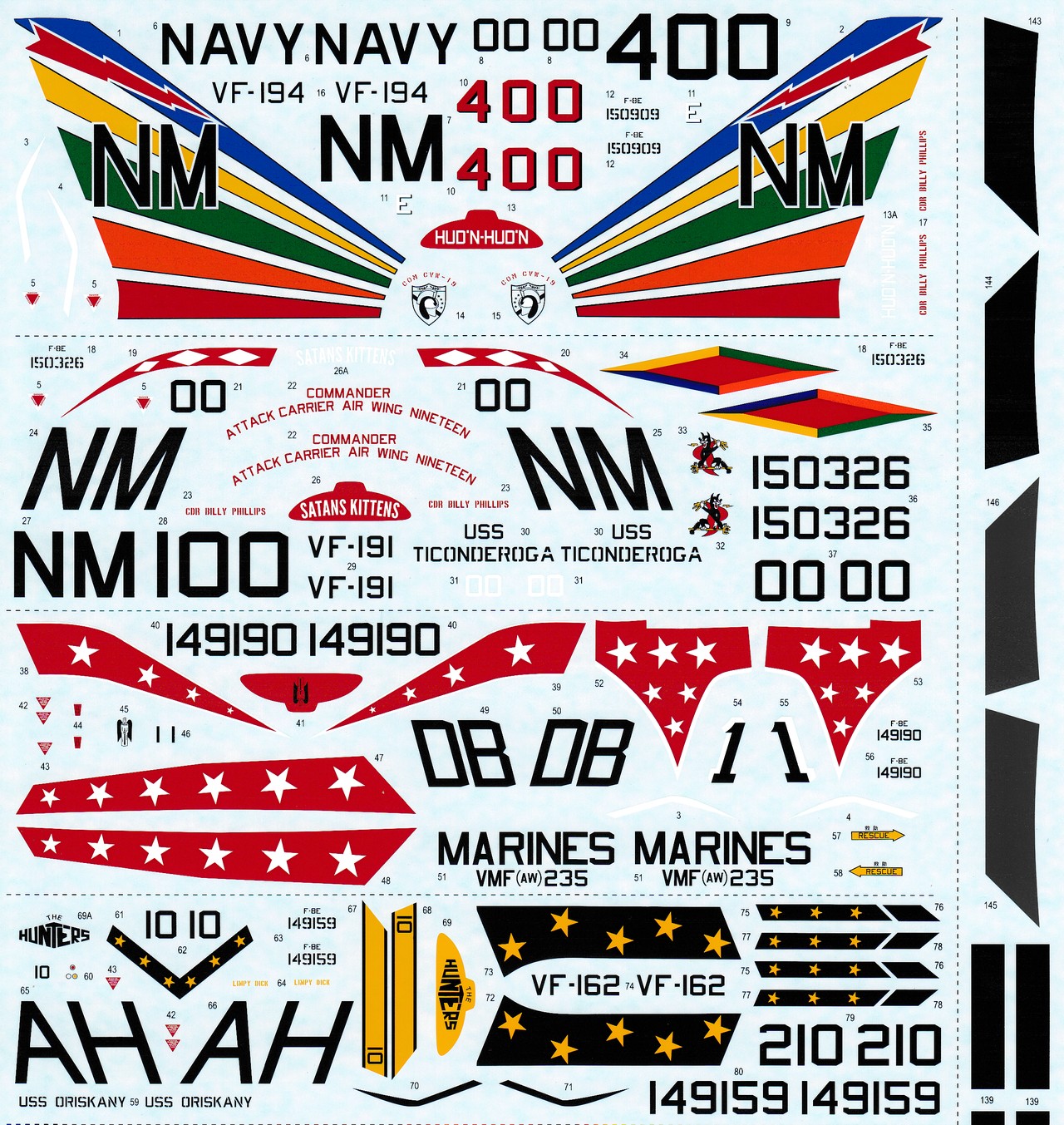 |
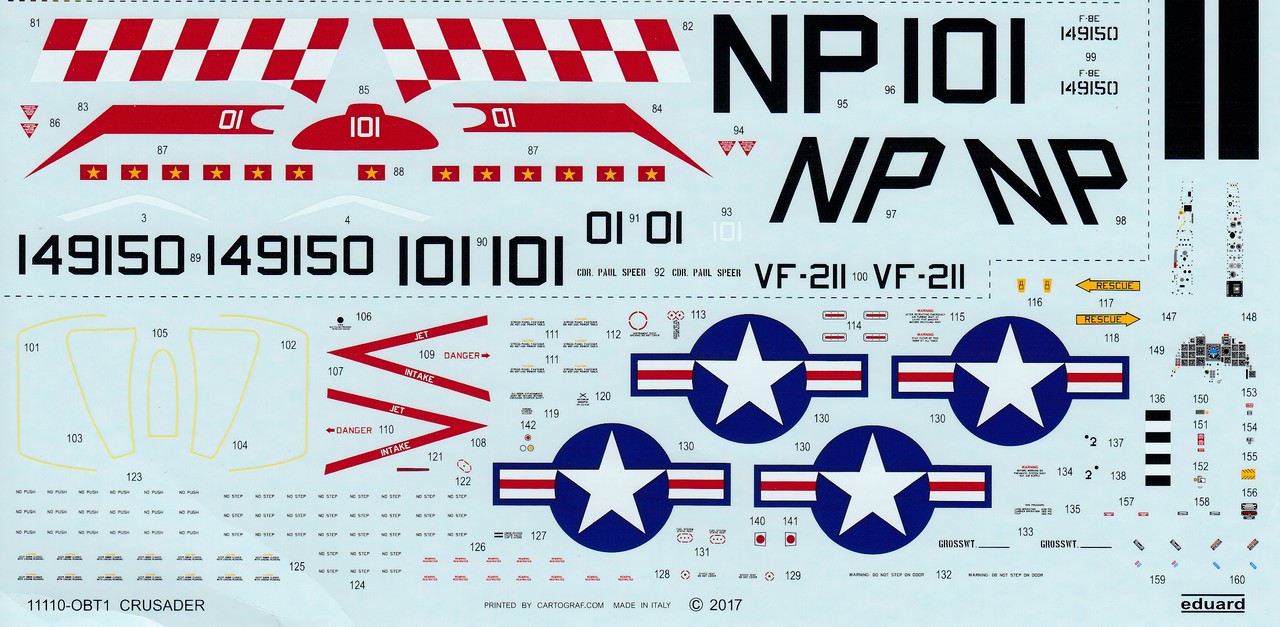 |
|
|
|
| All five options represent Vietnam War operational Crusaders, several of which achived MiG kills. Furball give a couple of paragraphs of relevant history for
each of the aircraft and the pilots who flew them in the instructions. A full set of airframe stencils is of course provided. |
 |
|
|
|
Verdict
Despite being initially underwhelmed with the apparent lack of extra 'goodies' found in the box, I have to say that having now looked more closely at
just what Eduard did include, and why they included it, I have come to realise the value provided by this kit release. If like me you already have a Hasegawa Crusader in your stash
then there may not be a huge amount of appeal in this release but for those out there that never grabbed an F-8 when it was available then this kit is for you.
Sure Eduard could have included more resin or PE in the box but that would
have inevitibly driven the price up, perhaps too much. Providing extra detail sets as options is something that Eduard have built their company on and I'm not one to tell them how to
suck eggs.
|
|
Appendix |
|
|
|
|
|
|
|
|
|
|
|
|
|
|
|
|
|
|
|
|
|
|
|
|
|
|
|
|
|
|
|
|
|
|
|
|
|
|
|
|
|
|
|
|
|
|
|
|
|
|
|
|
|
|
|
|
|
|
|
|
|
|
|
|
|
|
|
|
|
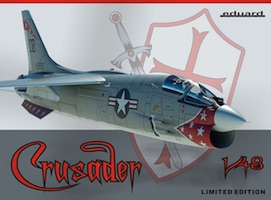
 The Vought F-8 Crusader was a single-engine, supersonic, carrier-based air superiority jet aircraft built by Vought for the United States Navy and Marine Corps,
replacing the Vought F7U Cutlass, and for the French Navy. The first F-8 prototype was ready for flight in February 1955. The F-8 served principally in
the Vietnam War. The Crusader was the last American fighter with guns as the primary weapon, earning it the title "The Last of the Gunfighters".
The Vought F-8 Crusader was a single-engine, supersonic, carrier-based air superiority jet aircraft built by Vought for the United States Navy and Marine Corps,
replacing the Vought F7U Cutlass, and for the French Navy. The first F-8 prototype was ready for flight in February 1955. The F-8 served principally in
the Vietnam War. The Crusader was the last American fighter with guns as the primary weapon, earning it the title "The Last of the Gunfighters".
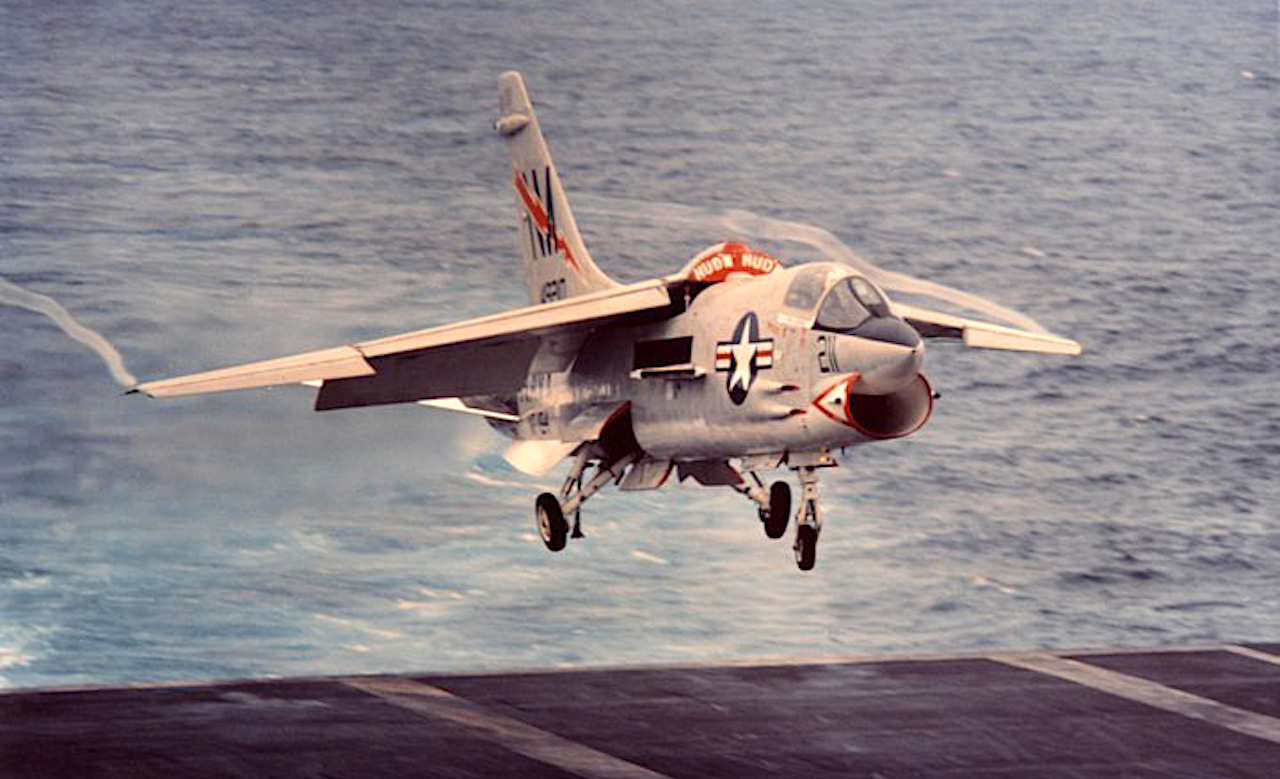
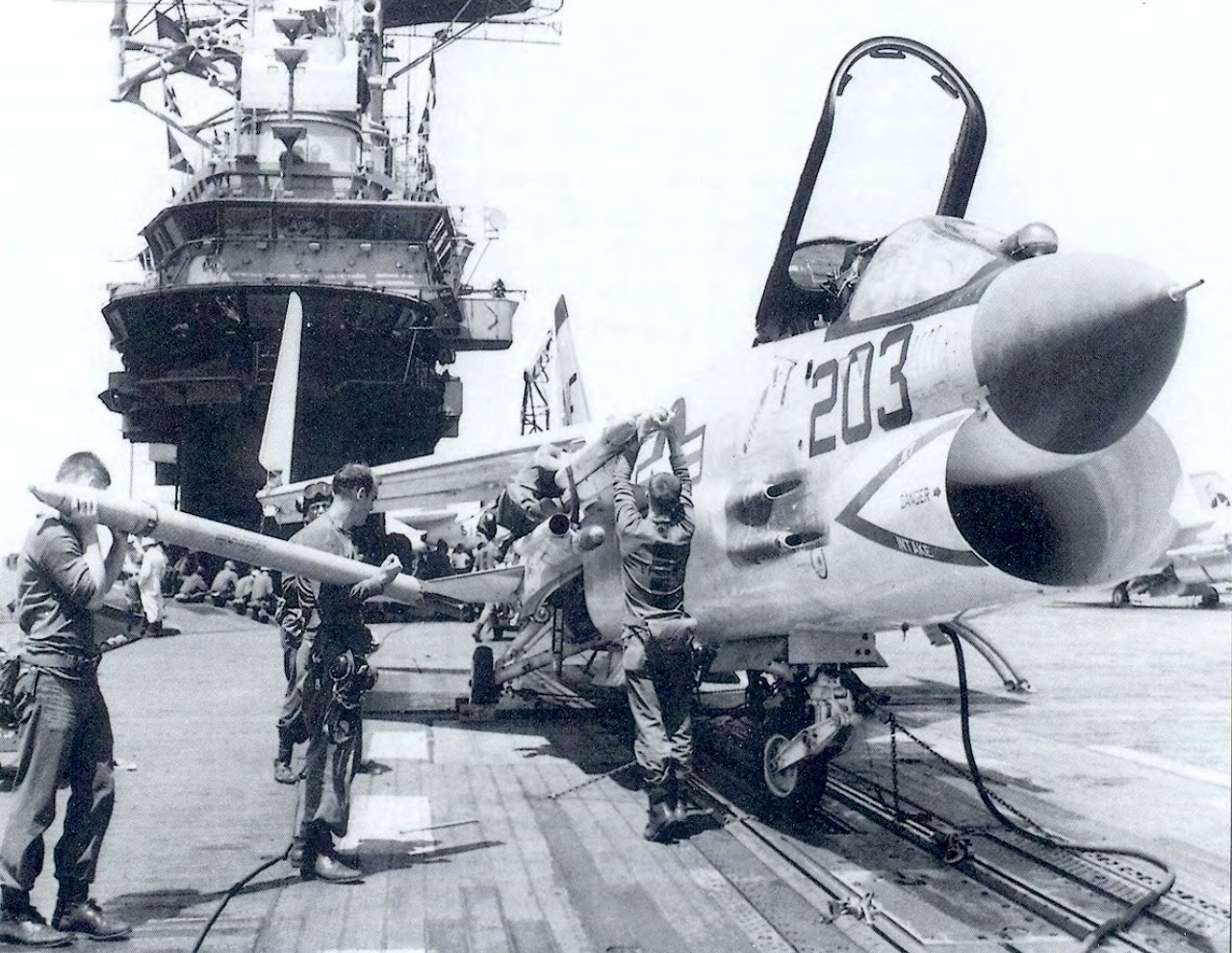
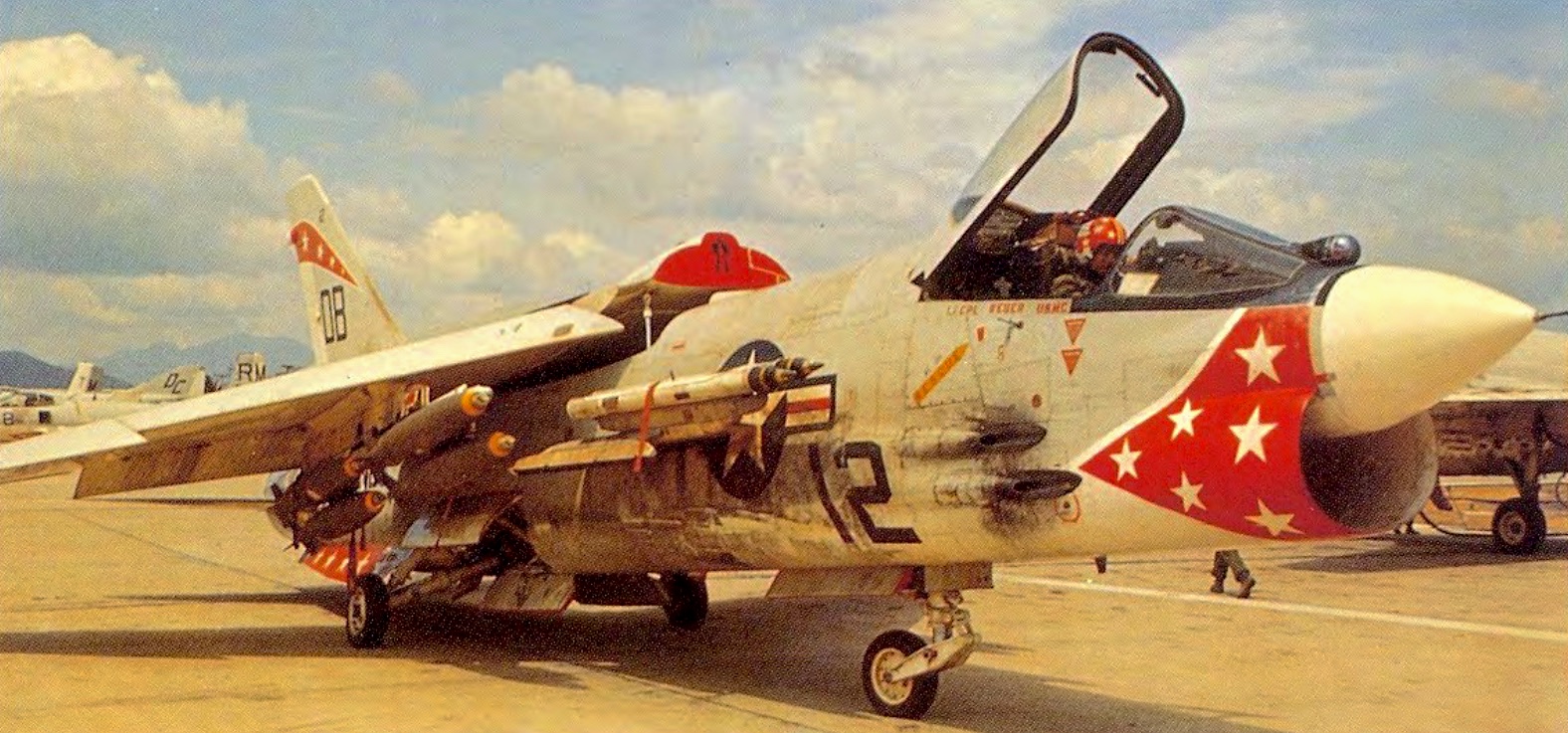
 This is the first of the Eduard 'Limited Edition' releases that I have obtained. In the past I resisted the urge to add another kit to my vast unbuilt stash
even though these Eduard boxings were packed with extra goodies to supplement the core plastic that Eduard has sourced from Academy and more lately Hasegawa.
When the F-8 Crusader came up however, even though I have 3 of the Hasegawa kits, I dove straight in. Reason being I've not got around to building any of my existing
F-8 kits and knew the extra motivation of getting his kit for a review would be what I needed to finally get to it.
This is the first of the Eduard 'Limited Edition' releases that I have obtained. In the past I resisted the urge to add another kit to my vast unbuilt stash
even though these Eduard boxings were packed with extra goodies to supplement the core plastic that Eduard has sourced from Academy and more lately Hasegawa.
When the F-8 Crusader came up however, even though I have 3 of the Hasegawa kits, I dove straight in. Reason being I've not got around to building any of my existing
F-8 kits and knew the extra motivation of getting his kit for a review would be what I needed to finally get to it.
